On the weekend of the 30th-31st of January, more than half a million people are expected to take part in the world’s largest wildlife survey, the Big Garden Birdwatch. Organised by the RSPB it is their attempt to document the changes in numbers of birds and other animals, allowing them to spot any problems a particular species may be having. For example the survey has shown the number of house sparrows in Britain has declined by 62% since 1979.
Taking part couldn’t be any easier, register on the RSPB website at www.rspb.org.uk/birdwatch and request a free Birdwatch pack, then spend one hour counting the number of birds you see in your garden, along with how often you have seen other animals such as hedgehogs and squirrels in your garden throughout the year. The only rules are as follows; you must only count birds which land in your garden, and you must record the highest number of a species you see at one time not how many of them you see. This is because the same bird could visit your garden more than once!
What birds should you expect to see?
The most spotted birds in last year’s survey were the House Sparrow, Starling and the Blackbird so you can probably expect to see some of those in your hour. But what about the more unusual birds?
Brambling
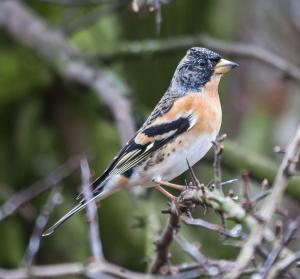 The Brambling is very similar to the Chaffinch, and they have even been known to fly together in the same flock. The Brambling’s main habitat is woodland, so if you live near woods and leave out some seeds, its main diet in winter, you may get a visit from one or more of these birds.
The Brambling is very similar to the Chaffinch, and they have even been known to fly together in the same flock. The Brambling’s main habitat is woodland, so if you live near woods and leave out some seeds, its main diet in winter, you may get a visit from one or more of these birds.
Collard Dove
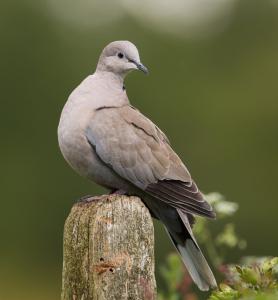 The Collard Dove related to the Woodpigeon, but is easy to spot as it is smaller than the Woodpigeon and has very distinctive black markings around its neck. They are a very common bird, found in all areas usually on their own or in a pair. Like the Brambling their favoured diet is seeds.
The Collard Dove related to the Woodpigeon, but is easy to spot as it is smaller than the Woodpigeon and has very distinctive black markings around its neck. They are a very common bird, found in all areas usually on their own or in a pair. Like the Brambling their favoured diet is seeds.
Fieldfare
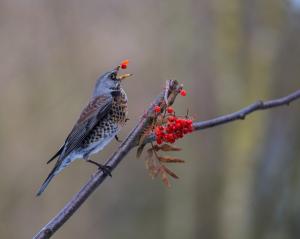 The Fieldfare is a large colourful thrush, known for spending its time in sociable flocks of up to 200 birds. The chances of seeing this bird will be higher if the countryside where it usually likes to spend its time are covered in snow and if you have berries growing in your garden.
The Fieldfare is a large colourful thrush, known for spending its time in sociable flocks of up to 200 birds. The chances of seeing this bird will be higher if the countryside where it usually likes to spend its time are covered in snow and if you have berries growing in your garden.
Great Spotted Woodpecker
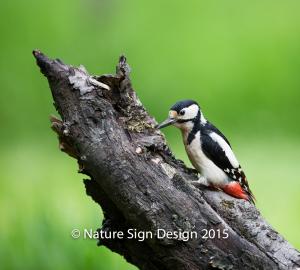 As its name suggests the Great Spotted Woodpecker prefers to spend its time in the woods. However as its diet consists of seeds and nuts it is a frequent visitor to bird tables and feeders, were you will be able to spot it because of its black and white feathers and trademark drumming sound.
As its name suggests the Great Spotted Woodpecker prefers to spend its time in the woods. However as its diet consists of seeds and nuts it is a frequent visitor to bird tables and feeders, were you will be able to spot it because of its black and white feathers and trademark drumming sound.
Goldfinch
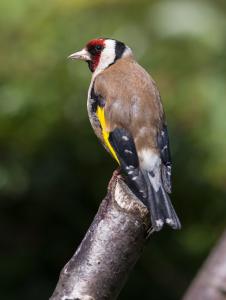 The Goldfinch is becoming an increasingly regular visitor to back gardens, however spotting them in winter has become more difficult as they are beginning to migrate to Spain in bigger and bigger numbers. However if one does visit your back garden you will be able to recognise it because of its red face and yellow patches on its wings.
The Goldfinch is becoming an increasingly regular visitor to back gardens, however spotting them in winter has become more difficult as they are beginning to migrate to Spain in bigger and bigger numbers. However if one does visit your back garden you will be able to recognise it because of its red face and yellow patches on its wings.
Big Garden Birdwatch Events
You can still get involved in the Big Garden Birdwatch, even if you don’t have a garden of your own, across the country lots of parks and wildlife reserves are running events over the weekend. At these events you can take part in various activities such as helping to count the number of birds, making bird feeders, and learning how to use binoculars correctly. To find your nearest event go to www.rspb.org.uk and enter your postcode, this will show you events taking place from the 22nd of January onwards. Are You Ready For The Big Garden Birdwatch?
Why not spend an hour in the garden this weekend, and see what you can spot.
![]() This work is licensed under a Creative Commons Attribution 4.0 International License.
This work is licensed under a Creative Commons Attribution 4.0 International License.

